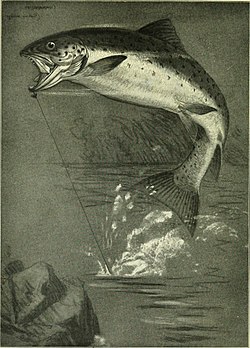
| Part of a series on |
| Animal rights |
|---|
Fish fulfill several criteria proposed as indicating that non-human animals experience pain. These fulfilled criteria include a suitable nervous system and sensory receptors, opioid receptors and reduced responses to noxious stimuli when given analgesics and local anaesthetics, physiological changes to noxious stimuli, displaying protective motor reactions, exhibiting avoidance learning and making trade-offs between noxious stimulus avoidance and other motivational requirements.
Whether fish feel pain similar to humans or differently is a contentious issue. Pain is a complex mental state, with a distinct perceptual quality but also associated with suffering, which is an emotional state. Because of this complexity, the presence of pain in an animal, or another human for that matter, cannot be determined unambiguously using observational methods, but the conclusion that animals experience pain is often inferred on the basis of likely presence of phenomenal consciousness which is deduced from comparative brain physiology as well as physical and behavioural reactions.[1]
If fish feel pain, there are ethical and animal welfare implications including the consequences of exposure to pollutants, and practices involving commercial and recreational fishing, aquaculture, in ornamental fish and genetically modified fish and for fish used in scientific research.